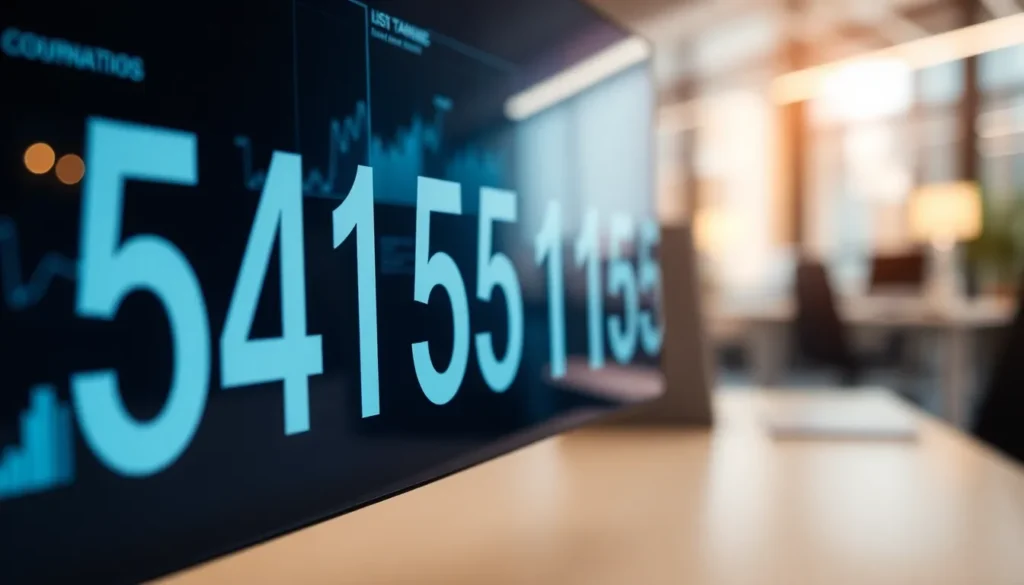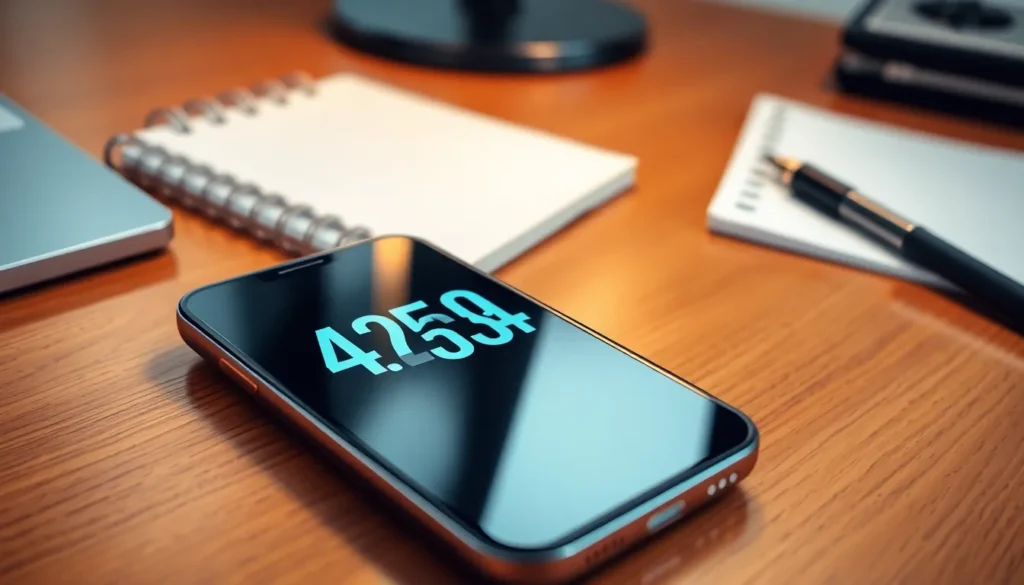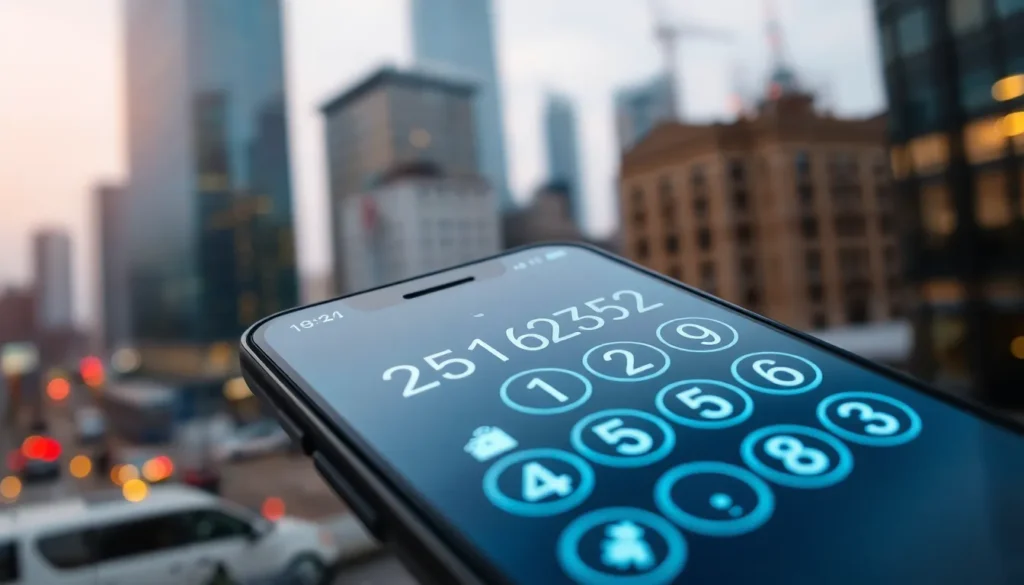Table of Contents
ToggleIn a world filled with numbers, one sequence stands out: 2512630572. It might look like a random string of digits, but this number holds a treasure trove of secrets just waiting to be uncovered. Whether it’s a phone number, a code, or something more mysterious, it’s time to dive into the quirky world behind these digits.
Overview of 2512630572
The number 2512630572 can serve various functions depending on context. In telecommunications, it resembles a phone number pattern, which raises questions about its potential use in communication. Codes often carry specific meanings in tech settings, suggesting that this sequence might relate to programming or encoding.
Analysis of the digits shows a unique composition that can represent different data points. The first three digits, 251, can indicate a geographic area in certain telephone numbering plans. Meanings evolve based on usage in different cultural or technological realms.
Subsequently, the middle sequence, 263, might represent a series in data classification or indexing. This could apply to databases or inventory systems, where specific number sequences denote particular items or categories. Relational databases frequently use such numeric identifiers for easy reference.
To broaden understanding, the last four digits, 0572, echo common patterns in both numerical codes and keypads. Such patterns facilitate memorization and recognition, enhancing user experience in various applications.
Exploring 2512630572 reveals its multifaceted nature. By examining its possible roles, individuals can appreciate how even a seemingly random number encompasses more than meets the eye. Its significance extends beyond basic numeric representation, inviting deeper inquiry into its potential implications.
Importance of 2512630572
The sequence 2512630572 carries significant implications in various contexts. Exploring its importance reveals how it connects to historical developments and remains relevant today.
Historical Context
The number 2512630572 may relate to historical telephone number formats established in the late 20th century. During this era, telephone companies adopted standardized formats for operational ease and user familiarity. Certain digits correspond to regional codes, which facilitated local calls. Areas using the initial digit sequence, 251, were part of specific geographic regions in North America. Subsequently, advancements in technology later influenced how such numbers became identifiers in data systems and telecommunications.
Current Relevance
This number’s relevance continues in modern communication systems and data management. In telecommunications, its pattern mirrors current routing systems used by service providers. Users encounter similar sequences in their daily interactions, whether dialing numbers or inputting codes. Furthermore, its numeric layout aids in data classification, revealed by the middle segment, 263. Databases utilize such structured patterns for efficient record-keeping and retrieval. As a result, the number exemplifies how contemporary society utilizes and categorizes information, emphasizing its ongoing significance.
Applications of 2512630572
Exploring the applications of 2512630572 reveals its versatility across different industries and technologies.
Industry Use Cases
Telecommunications often employs 2512630572, as its format aligns with standard phone number structures. For instance, it can serve as a functional identifier in call routing systems. Finance departments might use this number as a reference for financial transactions or internal coding. Retailers may also integrate it into their inventory systems, where data points assist in item identification. Medical facilities could utilize 2512630572 for patient records, adding another layer of organization to medical data management.
Technological Implementations
Technological platforms can incorporate 2512630572 in various ways. Developers might leverage its numeric pattern for software applications, where it can work as a unique key in databases. User interfaces may include it for simplified navigation, enhancing the user experience. Machine learning algorithms could rely on this sequence to classify data sets effectively. Security systems might employ 2512630572 as an access code, bolstering protection protocols in sensitive environments.
Challenges Associated with 2512630572
Utilizing 2512630572 presents specific challenges across various sectors. Telecommunications face hurdles in correctly classifying and routing calls that utilize this number. System errors occasionally arise when the initial digits, such as 251, are misrecognized by call management software.
Data privacy becomes a significant concern in finance when this number serves as a transaction reference. Unintended exposure or mismanagement of data linked to 2512630572 can lead to security breaches. Retail inventory systems also encounter issues with consistent identification due to potential overlapping numerical codes.
In a medical context, organizing patient records with 2512630572 could present difficulties. Compatibility across different healthcare databases remains a persistent challenge, complicating access to patient information. Furthermore, the interpretability of this sequence in security systems sometimes faces scrutiny. Misconfigured access codes may inadvertently bar entry or allow unauthorized access.
Compatibility extends beyond individual sectors. With technology relying heavily on numeric identifiers, diverse system architectures can complicate the integration of 2512630572. Variability in implementation can lead to inconsistent user experiences and operational inefficiencies.
As industries adapt, they confront the ongoing challenge of standardizing approaches to numbers like 2512630572. Addressing these challenges involves collaboration and ongoing innovation to ensure seamless functionality and security across communicating systems. In this environment, numerical identifiers must evolve to meet growing demands for efficiency and protection in data handling.
Future Trends Related to 2512630572
Emerging trends are shaping the significance of 2512630572 in various sectors. Telecommunications increasingly rely on advanced algorithms to improve call routing accuracy. These improvements address challenges in classifying numbers like 2512630572, ultimately enhancing user experience.
In finance, the integration of blockchain technology can safeguard transaction references linked to this number. Blockchain enhances security, reducing risks associated with data privacy breaches. Retailers are adopting AI-driven inventory management systems, optimizing the use of numbers like 2512630572 for product identification and tracking.
Medical facilities are expected to adopt integrated health information systems that utilize unique identifiers for patient records. Simplified organization and retrieval of information stem from adopting structured numeric layouts. Thus, 2512630572 aids in creating efficient patient management systems.
Adapting to challenges in security protocols remains essential for organizations using this number. Misconfigured access codes may complicate entry, but implementing multi-factor authentication can mitigate such risks.
Future trends indicate the importance of collaboration across industries. Standardizing approaches to numerical identifiers, like 2512630572, can enhance consistency in user experiences. Ongoing innovations in data handling techniques will likely ensure seamless functionality across systems.
As new technologies continue to emerge, the significance of numbers like 2512630572 will likely evolve. Its multifaceted nature emphasizes the ongoing need for clarity and efficiency in communication and data classification.
The exploration of 2512630572 reveals its multifaceted significance across various sectors. Its potential as a telecommunications identifier, financial reference, and organizational tool in retail and healthcare showcases its versatility. As industries adapt to new technologies and methodologies, the importance of standardizing numerical identifiers becomes increasingly clear.
Emerging trends highlight the necessity for collaboration to enhance efficiency and security. By addressing the challenges associated with this number, organizations can improve user experiences and ensure data integrity. Ultimately, the journey through the complexities of 2512630572 emphasizes the hidden meanings within seemingly random sequences, inviting further inquiry into their roles in modern society.







